How To Repair Gouges In A Triumph Boat
Once y'all buy a brand new, shiny boat, you will want to keep it undamaged equally long equally possible. However, chances are not on your side since weather elements will leave traces. Plus, y'all tin can't avoid scratches or water stains that appear over fourth dimension.
Although virtually new boats come up with gel-coating, you have two options when it comes to repairing your vessel, re-painting or re-applying gel coat. Nearly gunkhole owners have a dilemma about a better choice, gel-glaze vs. marine paint, for their boats since both options take their advantages and downsides. Let's discuss them.
Gel Glaze
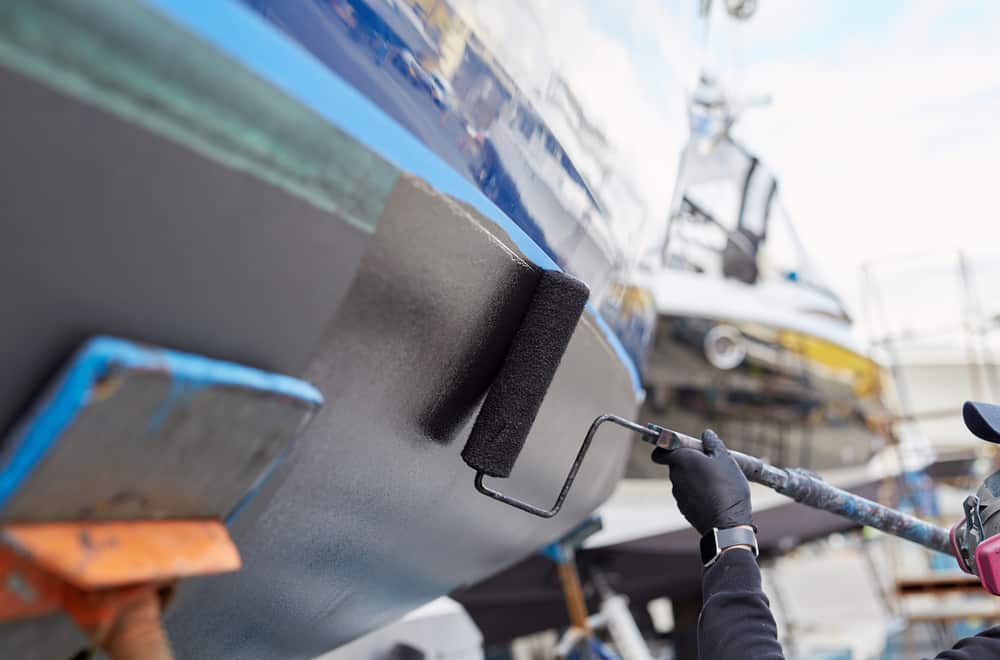
Gel coat is a finishing textile based on resin. Its purpose is to cover fiberglass, protect the boat hull, and give your gunkhole its appealing smooth and color.
The manufacturer sets the gel coating in a thick layer betwixt 0.01 to 0.04 inches (0.25 – 1 mm). Equally the gel dries, it hardens in a shell-like protection layer over the fiberglass and takes a permanent hull shape.
The gel coating formula comes with UV protection, which is crucial for avoiding sun damage and eventual discoloration. In improver, the coating won't react with chemicals typically found on a boat, such as gasoline, kerosene, and denatured alcohol. It besides prevents whatsoever water leaks on the boat hull.
The prime number gel coat advantage is its durability. If you maintain your boat regularly, it can protect the hull for a decade or two. Unfortunately, the polished burnished surface becomes dull and chalky over fourth dimension. That is when the gel coating repair kits come in handy.
On the other hand, repairing severe damage on a gel-coated boat demands excellent skills. That is why many boat owners make up one's mind to give a can of marine paint a shot.
Gel glaze types
Nowadays, y'all can find a wide choice of brands, colors, and formulas for gel coatings. Still, there are 2 main types of this protective cloth.
- All-purpose gel coat – It is a soft and flexible finish material you tin apply anywhere on your boat. Unfortunately, it is more than prone to scratches, cracking, and motion than other options.
- Tooling go coat – It is a stronger cover than a general-purpose one. Since its vital attribute is hardness, you should use this choice for boat sides and hull areas with less movement. This coating is a perfect option for achieving your boat'due south loftier-luster elegance.
DIY gel coat repair
No matter how thoroughly you polish, wax, and maintain your boat, its gel glaze fades over fourth dimension and becomes porous and tedious.
Some fine cracks volition announced similar to those of an erstwhile porcelain teacup. However, they tend to become deeper and more noticeable while the seasons pass. Somewhen, the fourth dimension for repairs will come.
Luckily, reacting in fourth dimension can save y'all from a complete gunkhole repair. The all-time choice is to use every polishing and waxing opportunity to audit the hulk surface closely.
For a start, yous should fix the initial, shallow scratches and cracks with some motorcar wax. Use a soft, cotton fiber cloth to apply the wax in slow, circular motions over the damaged areas.
All the same, yous can also purchase a gel blanket repair kit. In that instance, you should notice the neutral or the color closest to the existing 1.
Never forget to launder the damaged surface area thoroughly before starting. Then, remove the ruined coating around small cracks you want to repair and fill the space with the gel mix yous take. Always embrace gel-coat with wax paper or plastic wrap since information technology tin can't cure in the open up air.
Once the treated area hardens, y'all need to sand it with some fine-course sandpaper and utilise some polish for a finishing affect.
Marine Paint
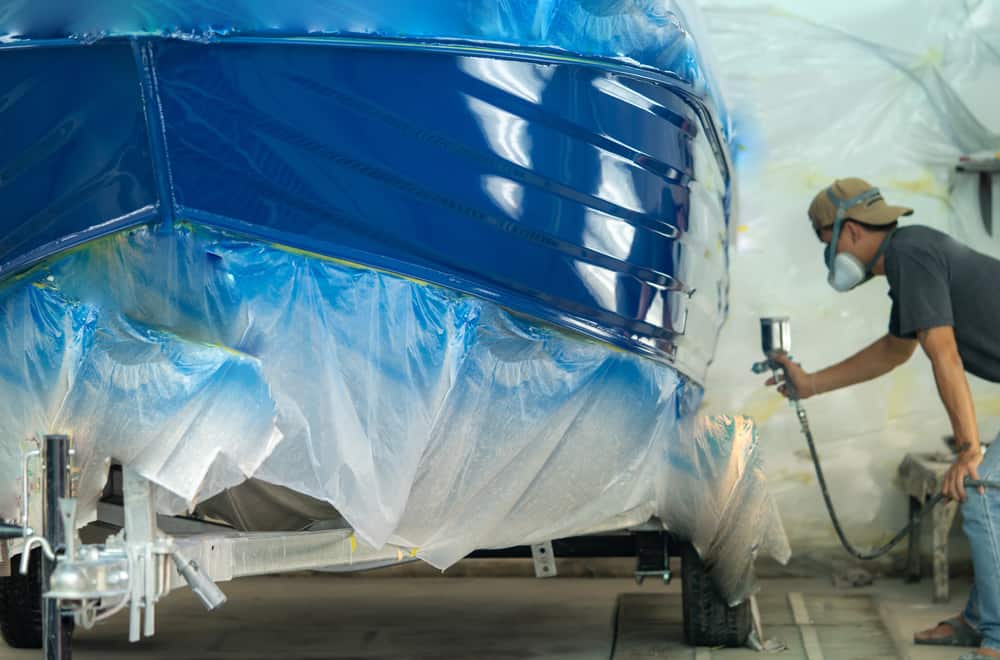
Many gunkhole owners agree marine paint is an outstanding alternative to any gel coat for boats. Offset of all, information technology comes in almost any color and shade imaginable.
That allows you to customize your boat with graphics and details. Further, marine paint dries quickly and doesn't require whatever special skills and conditions for repairs.
On the other mitt, information technology is the urethane paint with a specific formula for applying on the boat hull. Unfortunately, it won't provide UV protection, plus it is thin, and y'all volition probably scratch and damage it rapidly.
Luckily, there are different solutions you tin can add to the pigment earlier applying information technology to the boat surface that make up for these shortcomings. Remember that the mixture ever depends on the surface area you plan to treat.
Marine paint types
There are two types of marine paint for boats. The key one is the pigment itself, the premade mixture yous apply directly from a tin. Notwithstanding, you can also use and so-called ane-part paint and add together the desired compound for boosted benefits.
In that case, yous will get a 2-office marine paint. Ever pay attention to instructions and set up the mix at the exact ratio yous need. Otherwise, yous can miss the desired shade or brand a permanent stain on your boat, which is even worse.
Present, there are many premade two-part marine paints on the market place. The typical choices include:
- Antifouling blanket – Use it for the lesser to foreclose the accumulation of algae, seaweed, fungi, and microorganisms deposits.
- UV protective coating – This selection is perfect for slowing discoloration, sun damage, and hazing on your vessel.
- Anti-sideslip coatings – You should add this and so-called topside boat pigment to marine paint for painting the boat'south deck, particularly the walking area.
- Final primers – They will provide an additional protective layer, making your marine paint more durable.
DIY boat re-pigment
Hypothetically speaking, re-painting a boat doesn't require much brainstorming. The vital part to call back is that yous tin't employ a two-function paint over a one-part or gel coat.
If you lot are unsure what the original paint is, stick to a one-role can. The preparation phase is to launder your boat thoroughly and so sand it. Repeat as needed.
Apply the showtime layer of marine pigment and inspect the gunkhole surface closely once it is dry out. Most experts recommend painting three or four thin, consequent tiers rather than one thick.
Of grade, you lot demand to wash and sand your boat after each layer, which can prove to be time-consuming and tiring. Lastly, cover the paint with a finishing primer to give your vessel an appealing shine.
Gel Coat vs. Marine Paint
As I have already mentioned, both marine paint and gel coat for boats take their pluses and minuses. However, comparing them in dissimilar categories tin aid you make up one's mind. In that location are aspects where the paint is the clear winner and those where the gel coating takes the atomic number 82.
Appearance
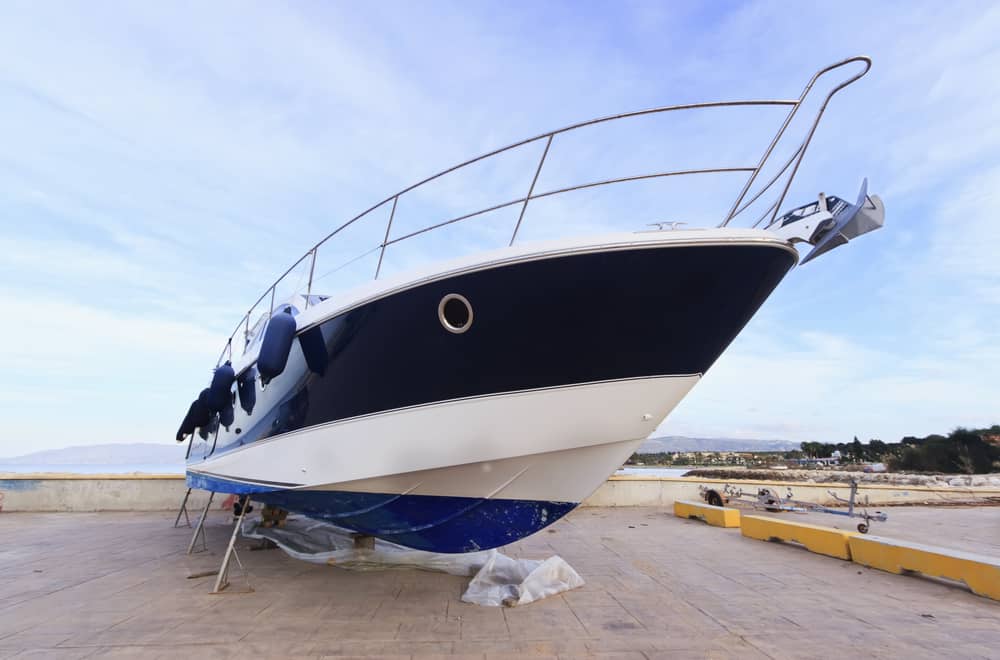
Both options have their downsides when it comes to aesthetics. Gel coats come in a limited prepare of colors, while marine paints provide you with a much wider choice. Plus, you can combine 2 colors or use paint to customize your gunkhole with a graphic or writing.
On the other hand, gel coats for boats are consistent and won't fade, peel, and scissure over time as much as marine paints will.
Durability
A brand new gel coat on a boat tin last a decade or two, depending on the maintenance level. Marine pigment has much shorter immovability, and you need to re-paint your vessel every 2 to three years.
The difference is that a gel blanket expands and contracts with the material information technology covers. The paint can accommodate to fiberglass changes only to a certain degree before information technology cracks.
Even so, marine paint wins when it comes to shelf life. Gel coat typically expires later on 12 to 15 months, whereas unopened solvent-based marine paint won't go wrong for over ten years.
Protection
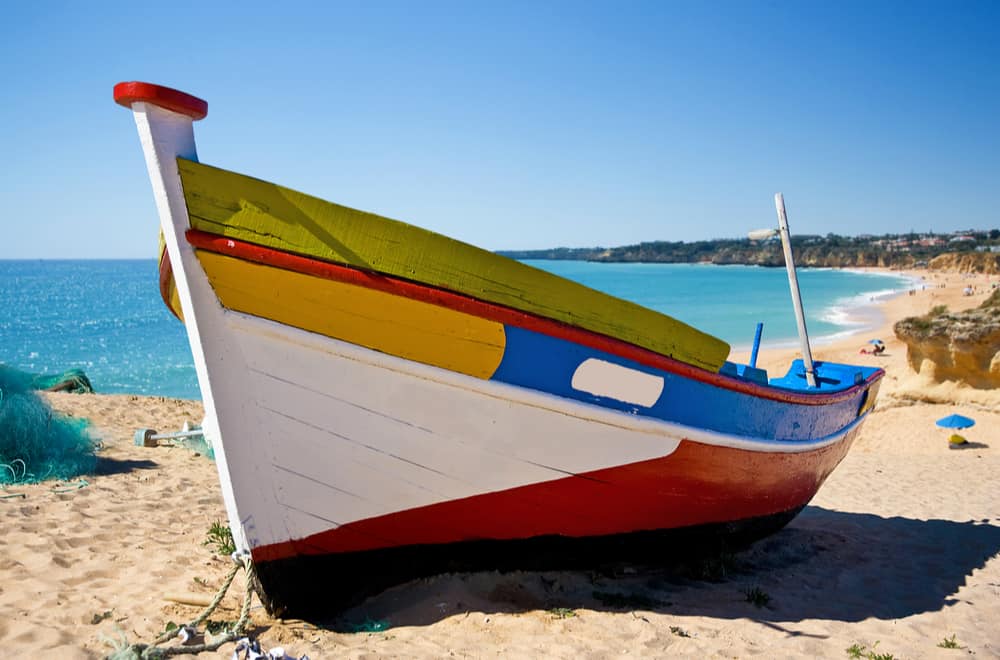
Gel glaze gives your boat far better protection from chipping, scratches, and stains than marine paint. The crucial reason is the thickness since y'all apply the paint in a sparse layer.
Plus, chemicals on your boat tin spill and ruin the paint, while the gel coat comes with resistance to about chemicals, including gasoline.
Reparability
Both gel coat and marine paint require similar preparation before repair and restoration. However, applying the blanket is more challenging than painting with marine paint.
Environmental outcome
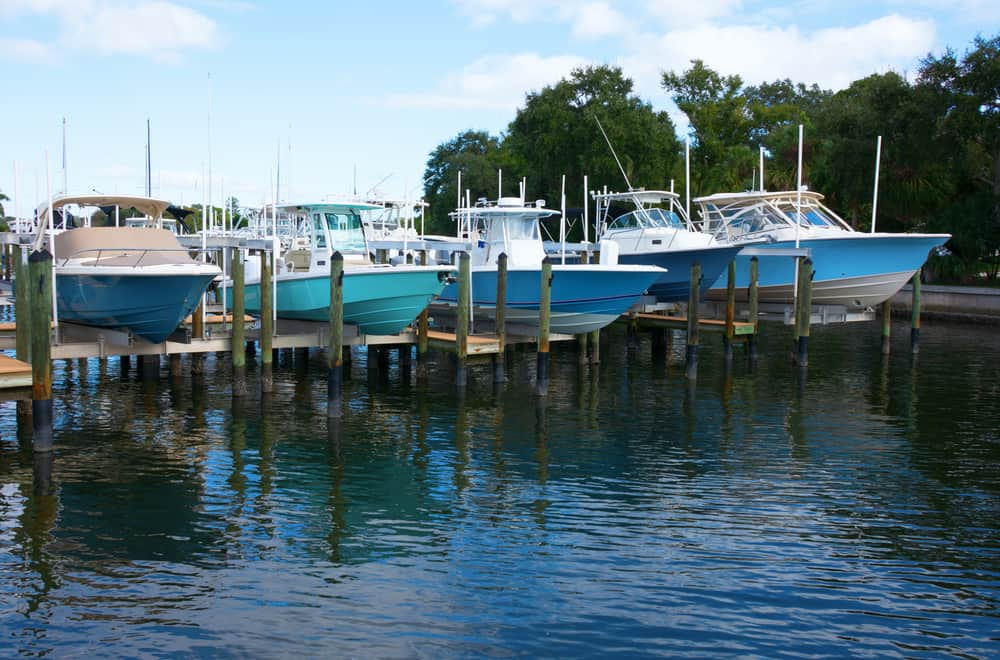
Unfortunately, many marine paints comprise copper and other chemic elements harmful to the surroundings, which is not the case with a gel coat.
Moreover, the copper paint is more prone to chipping than gel, and dissolving bottom pigment tin can impairment creatures living in the water.
Costs
If you make up one's mind to hire a professional person to re-Gelcoat or re-paint your boat, you will need to fix aside a significant corporeality of money. The last beak depends on the boat size since the services companies always offer quotes by linear foot.
Still, marine paint is slightly more expensive than gel glaze since it needs additional primers and protection. In both cases, the price starts betwixt $1,000 and $v,000.
Summary
Most new boats have gel coats over fiberglass and not marine paint. A gel is more durable, cheaper, and prevents chemic and elements harm. Even so, marine paint offers better colour pick and less complicated repairs. Finally, the option is yours since both options have many great attributes.
Source: https://www.triumphboats.com/paint-vs-gelcoat/
Posted by: piercevaggrosen.blogspot.com


0 Response to "How To Repair Gouges In A Triumph Boat"
Post a Comment